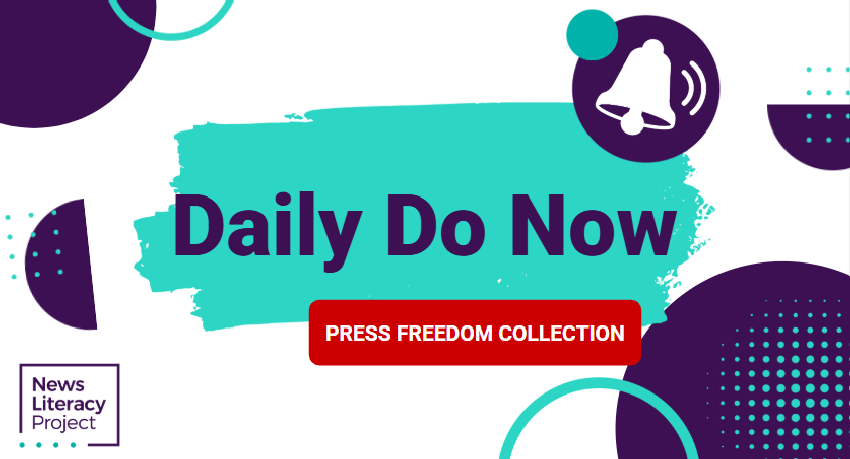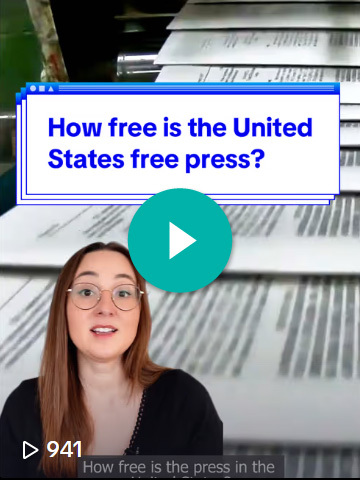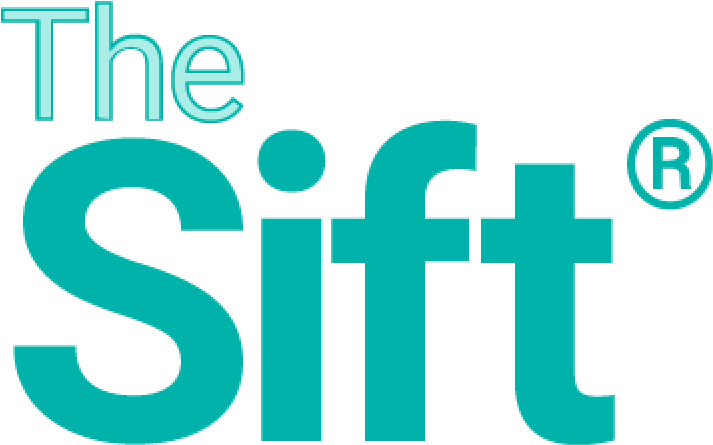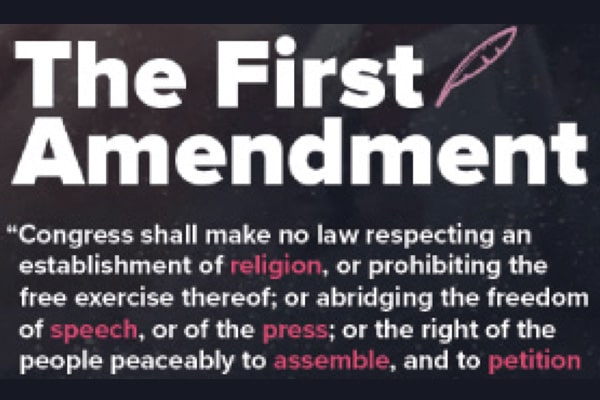The Sift: Special issue: Teach about press freedom
|
You’re busy. We get it. But there’s still time to take The Sift annual reader survey! Please take a few minutes to share your thoughts about this newsletter to help us make it as useful as possible. |
In this issue
Teach about press freedom | Daily Do Now press freedom slides
Observe World Press Freedom Day

| Press freedoms are diminished all over the world. |
Journalists work in nearly every country in the world to keep people informed about issues and events that impact them. But the freedom that journalists have to do their jobs varies significantly from country to country.
We’re marking World Press Freedom Day, which was on May 3, by dedicating this special issue to ways to teach about press freedoms.
Though conditions for journalists have worsened recently, this year was the first time the global state of press freedom was categorized as a “difficult situation” by Reporters Without Borders (aka RSF or Reporters Sans Frontières). RSF, a nonprofit that acts for independent journalism, began releasing its annual press freedom rankings over 20 years ago.
Among 180 countries assessed in RSF’s 2025 World Press Freedom Index report, the U.S. ranked 57, down two spots from 55 in 2024. According to the U.S. Press Freedom Tracker, a database that documents press freedom violations in the U.S., there have been seven assaults on American journalists over the last six months.
At the top of RSF’s press freedom rankings were Norway (1), Estonia (2) and Netherlands (3). At the bottom were China (178), North Korea (179) and Eritrea (180).
Forty-two countries that account for more than half the world population are in the red on the RSF index — in other words, are areas in which it is dangerous to practice journalism. Among them are Palestine (163), where nearly 200 media professionals have been killed during the Israel-Hamas War. Israel (112) also declined in its press freedom ranking.
How do RSF and other media watchdog groups measure press freedoms in a given country? To start, they consider how journalists are treated:
- How much risk do journalists face of being threatened, jailed or physically harmed for their work?
- What legal and judicial protections do the press have in their country, if any?
- Who owns media outlets and what economic pressures do they face?
Students can learn more about these factors in the News Literacy Project’s “Press Freedoms Around the World” lesson on Checkology®. This lesson also explores global press freedom rankings and invites students to create their own press freedom report.
Here are three more ways to teach about press freedom.
1. Use Daily Do Now teaching slides.

This special press freedom collection of Daily Do Now teaching slides provides 5- to 10-minute bell ringer activities. Slides in this collection ask students to think about global press freedoms, analyze editorial cartoons and consider the impact of First Amendment protections on press freedoms in the U.S.
2. Invite a journalist to your classroom.
Take advantage of NLP’s Newsroom to Classroom volunteer directory to invite a journalist to your classroom, either virtually or in-person. Journalists can explore the role of a free press with students and how the First Amendment impacts their work. An investigative reporter could also help students understand the significance of the watchdog role of the press — and how journalism acts as a fourth estate to hold government accountable.
3. Have students Dig Deeper with think sheets.
If you’re a longtime Sift subscriber, you may remember the Dig Deeper think sheets that accompanied the newsletter in previous years. We thought we’d bring the practice back today with this think sheet for students to evaluate the effects of political pressure on press freedoms worldwide. We also thought this 2023 think sheet on press freedom challenges journalists face around the world was worth sharing again. (Note: It mentions journalist Evan Gershkovich, who was detained by Russia in 2023 and held for 16 months until his return to the U.S. in August 2024).
And to help students Dig Deeper on First Amendment issues, look to this think sheet on the importance of the 1964 New York Times Co. v. Sullivan ruling. (By the way, the U.S. Supreme Court declined this year to hear a case challenging this ruling.)
★ More NLP resources:
|
➡️ One more helpful resource is this edWebinar recording, “Trial by Media? The Free Press and the Criminal Justice System.” It’s a conversation recorded last week between the News Literacy Project and Meghann Cuniff, a legal affairs reporter known for her deep reporting about court trials, including cases involving high-profile rappers. |
Reading list
- “Press freedom linked to greater financial stability, finds global study” (The Conversation).
- “Americans remain concerned about press freedoms, but partisan views have flipped since 2024” (Pew Research Center).
- “Justice Department says it will resume practice of obtaining reporters’ records in leak inquiries” (The Associated Press).
- “Gaza: RSF files its fourth complaint in a year with the ICC for Israel’s war crimes against journalists” (Reporters Without Borders).
- “In Japan, a Journalist Takes a Stand by Striking Out on His Own” (The New York Times).
- “The war on Iran’s journalists: The appetite for a free press has never been stronger” (UnHerd).
Featured video
Check out this NLP TikTok (also on Instagram) about the United States’ press freedom ranking.

Thanks for reading!
Your weekly issue of The Sift is created by Susan Minichiello (@susanmini.bsky.social), Dan Evon (@danieljevon), Peter Adams (@peteradams.bsky.social), Hannah Covington (@hannahcov.bsky.social) and Pamela Brunskill (@PamelaBrunskill). It is edited by Mary Kane (@mk6325.bsky.social) and Lourdes Venard (@lourdesvenard.bsky.social).
You’ll find teachable moments from our previous issues in the archives. Send your suggestions and success stories to [email protected].
Subscribe to this newsletterSign up to receive NLP Connections (news about our work) or update your subscription preferences here. |

Check out NLP's Checkology virtual classroom, where students learn how to navigate today’s information landscape by developing news literacy skills.






